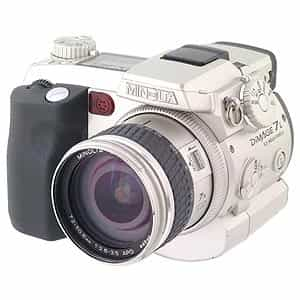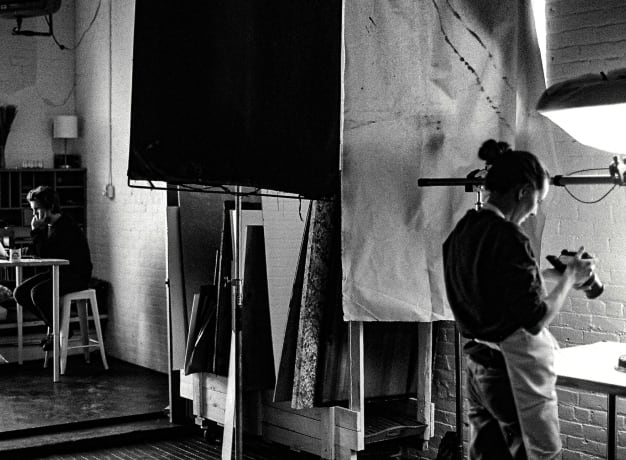This product is currently out of stock. Please contact a KEH photography expert to discuss similar options.
Call 1-800-342-5534 or chat with us online!
Minolta Dimage 7I Digital Camera {5.2MP}
$0.00-$0.00


Image Sensor
5.0 megapixel CCD sensor
Sensitivity
ISO: Auto or Selectable from 100 - 800
Lens
Optical: 7.2mm - 50.8mm (35mm equivalent: 28mm - 200mm)
Digital Zoom: 2x
Aperture
F/2.8 (Wide), F/3.5 (Telephoto)
Shutter Speed
4 seconds - 1/4000th of a second
Burst Rate
2.0 fps
Flash
Built-in
Flash Range: (Wide) 1.6 - 12.5 feet / 0.5-3.8m, (Telephoto) 1.6 - 9.8 feet / 0.5-3m
Modes: Fill-flash, red-eye reduction, rear flash sync, wireless/remote flash
Hotshoe
Compatible with: 5600HS(D), Program Flash 3600HS(D), Macro Twin Flash 2400, Macro Flash Ring 1200
White Balance
Automatic, Preset (Daylight, Tungsten, Fluorescent and Cloudy) and Custom
Exposure Modes
Programmed AE (with program shift), aperture priority shutter priority, and manual modes
Shooting Modes
Portrait, sports action, sunset, night portrait, text
Movie Mode
Quicktime with audio
Color Shooting Options
Natural color, vivid color, black and white (neutral and toned), Solarization
Self Timer
10 second duration
Video Output
A/V out (PAL / NTSC)
Viewfinder
Electronic: EVF
LCD
1.8 inch, 118,000 pixels TFT color display
File Formats
RAW
TIFF
JPEG
Movie (Quicktime Motion JPEG)
Storage Media
CompactFlash Type I or II, Microdrive compatible
Power Supply
4 x AA Alkaline or Rechargeable AA Ni-MH batteries (Use of Ni-MH batteries is recommended.)
Computer Connectivity
USB or Card Reader
Operating System Requirements
Windows: 98, 98SE, ME, NT, 2000, XP
Mac: OS 10.0, 10.1, 10.2
Dimensions (W x H x D)
4.61 x 3.56 x 4.43 inches
117 x 90.5 x 112.5 mm
Weight (Excluding Battery)
18.5 oz
525g
Other Features
The Digital Effects Control (DEC) and the Digital Enhanced Bracketing gives the photographer control over saturation, contrast and exposure, as well as control over color. A filter effect has been added to the DEC so that color images can be made warmer or cooler; and black and white images can be toned. This offers unparalleled creative freedom when combined with the two color modes: Vivid Color and Solarization.
| Brand Name | Minolta |



